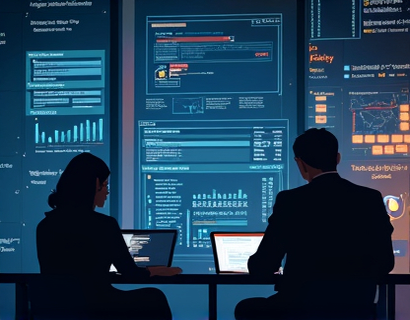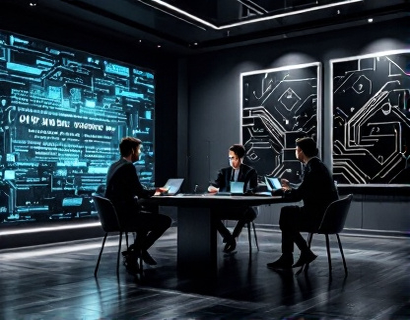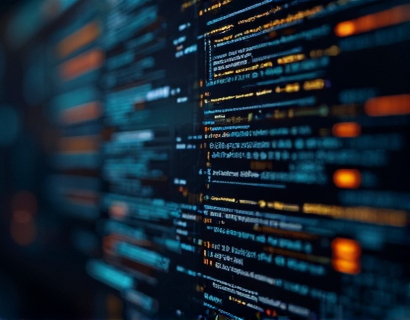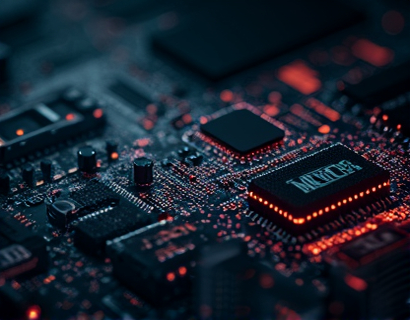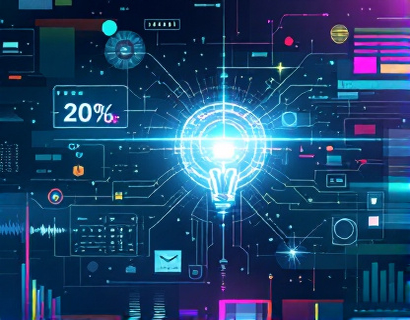Unlocking Blockchain Potential: Advanced Layer 2 Solutions for EVM-Enabled Software Development
In the rapidly evolving landscape of blockchain technology, the Ethereum Virtual Machine (EVM) has played a pivotal role in enabling the creation of decentralized applications (dApps). However, as the adoption of blockchain solutions grows, the limitations of the EVM, particularly in terms of scalability and transaction throughput, have become increasingly apparent. Advanced Layer 2 (L2) solutions offer a promising pathway to overcome these challenges, providing developers with the tools to build faster, more secure, and cost-effective dApps. This article delves into the intricacies of L2 solutions, focusing on their application in EVM-enabled software development and how they are set to revolutionize the blockchain industry.
Understanding Layer 2 Solutions
Layer 2 solutions refer to technologies and protocols built on top of existing blockchain networks, or Layer 1, to enhance performance and reduce costs. Unlike Layer 1 improvements, which involve modifying the core blockchain protocol, L2 solutions operate within the existing framework, addressing specific bottlenecks such as high transaction fees and slow processing times. For EVM-enabled blockchain software, L2 solutions are particularly crucial as they enable the execution of smart contracts off the main chain, thereby alleviating congestion and improving overall network efficiency.
Key Benefits of Advanced L2 Solutions
The adoption of advanced L2 solutions brings a multitude of benefits to developers and users alike. Firstly, scalability is significantly enhanced, allowing for a higher number of transactions to be processed per second. This is achieved through various mechanisms, including state channels, sidechains, and rollups, each with its unique approach to offloading transactions from the main chain. Secondly, security is maintained at a high level, as L2 solutions are designed to be cryptographically sound and tightly integrated with the underlying EVM. Lastly, cost efficiency is a major advantage, as users pay only for the resources they consume, rather than the fixed gas fees associated with on-chain transactions.
State Channels: A Closer Look
State channels are one of the most promising L2 solutions for EVM-enabled applications. They allow multiple transactions to be executed off-chain, with only the final state being recorded on the blockchain. This mechanism is particularly useful for applications that involve frequent, small transactions, such as gaming or payment systems. By moving the bulk of the transaction processing off the main chain, state channels reduce the load on the EVM, resulting in faster transaction times and lower fees. The simplicity and efficiency of state channels make them an attractive option for developers looking to enhance the user experience of their dApps.
Sidechains: Expanding the EVM Ecosystem
Sidechains are another L2 solution that complements EVM-enabled blockchain software. A sidechain is a separate blockchain that is linked to the main chain, allowing assets to be transferred between the two. This setup enables the main chain to focus on critical operations while sidechains handle less critical but high-volume transactions. Sidechains can be customized to suit specific use cases, offering flexibility and enhanced performance. For developers, this means the ability to create specialized environments for different applications, each optimized for its unique requirements.
Rollups: Optimizing Transaction Throughput
Rollups are perhaps the most widely discussed L2 solutions for EVM-enabled blockchains. They come in two main flavors: Optimistic Rollups and ZK Rollups. Optimistic Rollups bundle multiple transactions into a single transaction on the main chain, with a challenge period allowing anyone to dispute the validity of the transactions. If no challenge is raised, the transaction is considered valid. ZK Rollups, on the other hand, use zero-knowledge proofs to bundle and verify transactions off-chain, providing a more efficient and secure solution. Both types of rollups significantly increase transaction throughput while maintaining the security of the EVM, making them ideal for high-traffic dApps.
Enhancing Security with Advanced L2 Solutions
Security remains a paramount concern in blockchain development, and advanced L2 solutions are designed to uphold the highest standards. By offloading transactions to L2 layers, the EVM is relieved of excessive load, reducing the risk of congestion-related vulnerabilities. Moreover, L2 solutions are built with robust cryptographic techniques to ensure that off-chain transactions are as secure as on-chain ones. For instance, ZK Rollups use advanced cryptographic proofs to guarantee the integrity of transactions without the need for extensive on-chain computation. This dual-layer approach not only enhances security but also provides developers with greater peace of mind when building complex dApps.
Cost Efficiency: A Game Changer for Developers
The financial aspect of blockchain development is often a significant barrier for many projects. Advanced L2 solutions address this by drastically reducing transaction costs. Since most transaction processing occurs off the main chain, developers pay only for the final state updates and any necessary on-chain interactions. This cost structure is particularly beneficial for startups and smaller projects that may not have the resources to handle high gas fees. Additionally, the reduced need for complex on-chain logic and state management translates to lower development costs, making blockchain innovation more accessible to a broader range of developers.
Case Studies: Real-World Applications
To better understand the practical implications of advanced L2 solutions, let's examine a few real-world applications. One notable example is a decentralized finance (DeFi) platform that leverages Optimistic Rollups to handle a high volume of trades and smart contract executions. By offloading most transactions to the rollup, the platform achieves near-instant transaction confirmation times and minimal fees, enhancing user experience and attracting more users. Another example is a gaming platform that uses state channels to manage in-game transactions and asset transfers, ensuring smooth gameplay and reducing latency. These case studies demonstrate the versatility and effectiveness of L2 solutions in various blockchain applications.
Challenges and Considerations
While advanced L2 solutions offer numerous advantages, they also come with their own set of challenges and considerations. One of the primary challenges is the complexity of integrating L2 layers with existing EVM-based dApps. Developers need to have a solid understanding of both the main chain and the L2 protocols to ensure seamless integration. Additionally, the ecosystem for L2 solutions is still evolving, and compatibility issues can arise. However, as the technology matures, these challenges are expected to diminish, making L2 solutions more user-friendly and accessible.
Future Prospects: The Road Ahead
The future of blockchain technology is increasingly intertwined with the development and adoption of advanced L2 solutions. As the demand for scalable and cost-effective dApps continues to grow, L2 solutions will play a crucial role in driving innovation. For developers, this means a richer set of tools and frameworks to build more sophisticated and user-friendly applications. For the broader blockchain community, L2 solutions promise a more robust and inclusive ecosystem, where the benefits of decentralization can be realized without the constraints of current Layer 1 limitations.
In conclusion, advanced Layer 2 solutions are transforming the landscape of EVM-enabled software development. By enhancing scalability, security, and cost efficiency, these technologies empower developers to create next-generation dApps that can handle the demands of a growing user base. As the L2 ecosystem continues to evolve, the potential for blockchain innovation is boundless, opening up new possibilities for developers and users alike.







